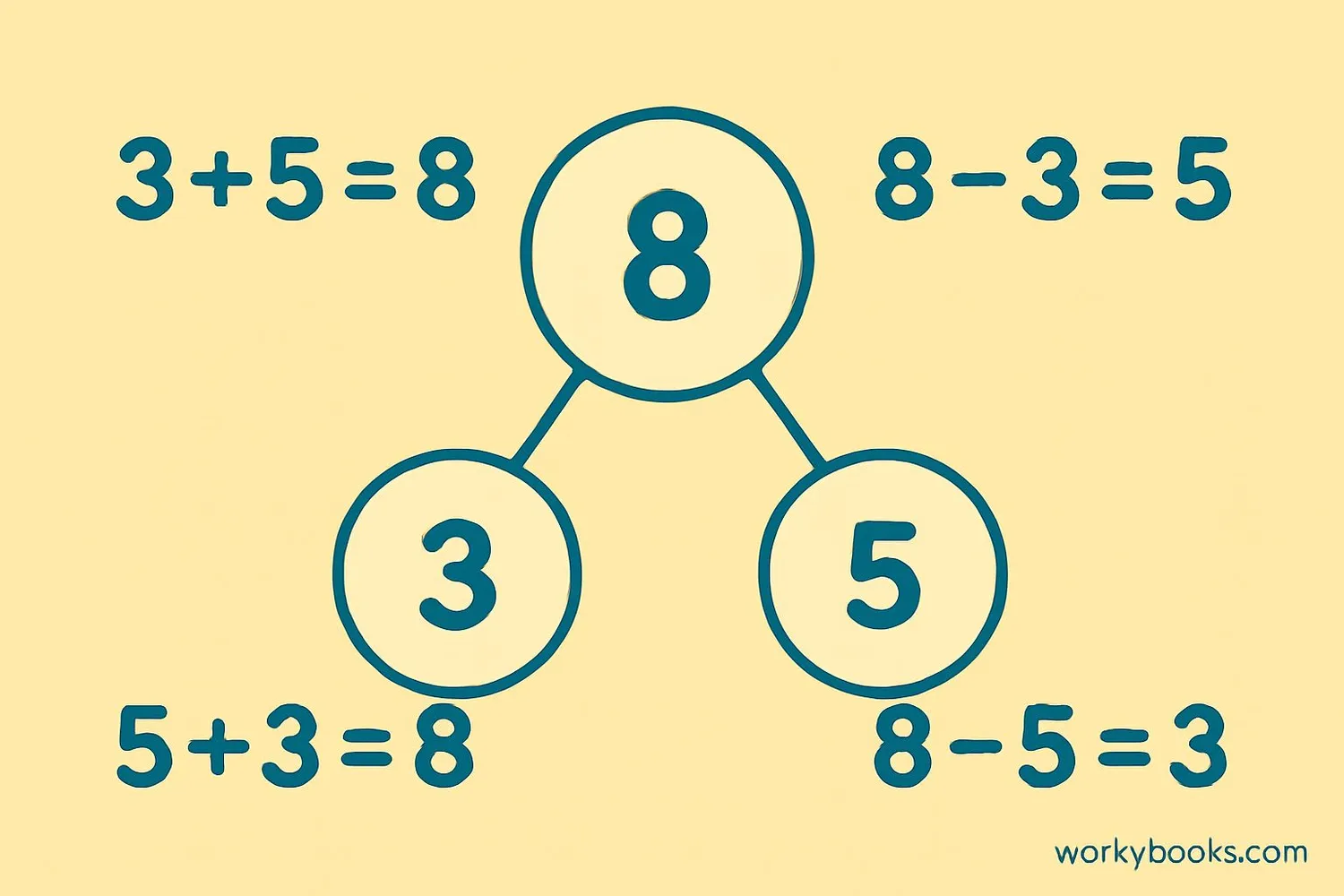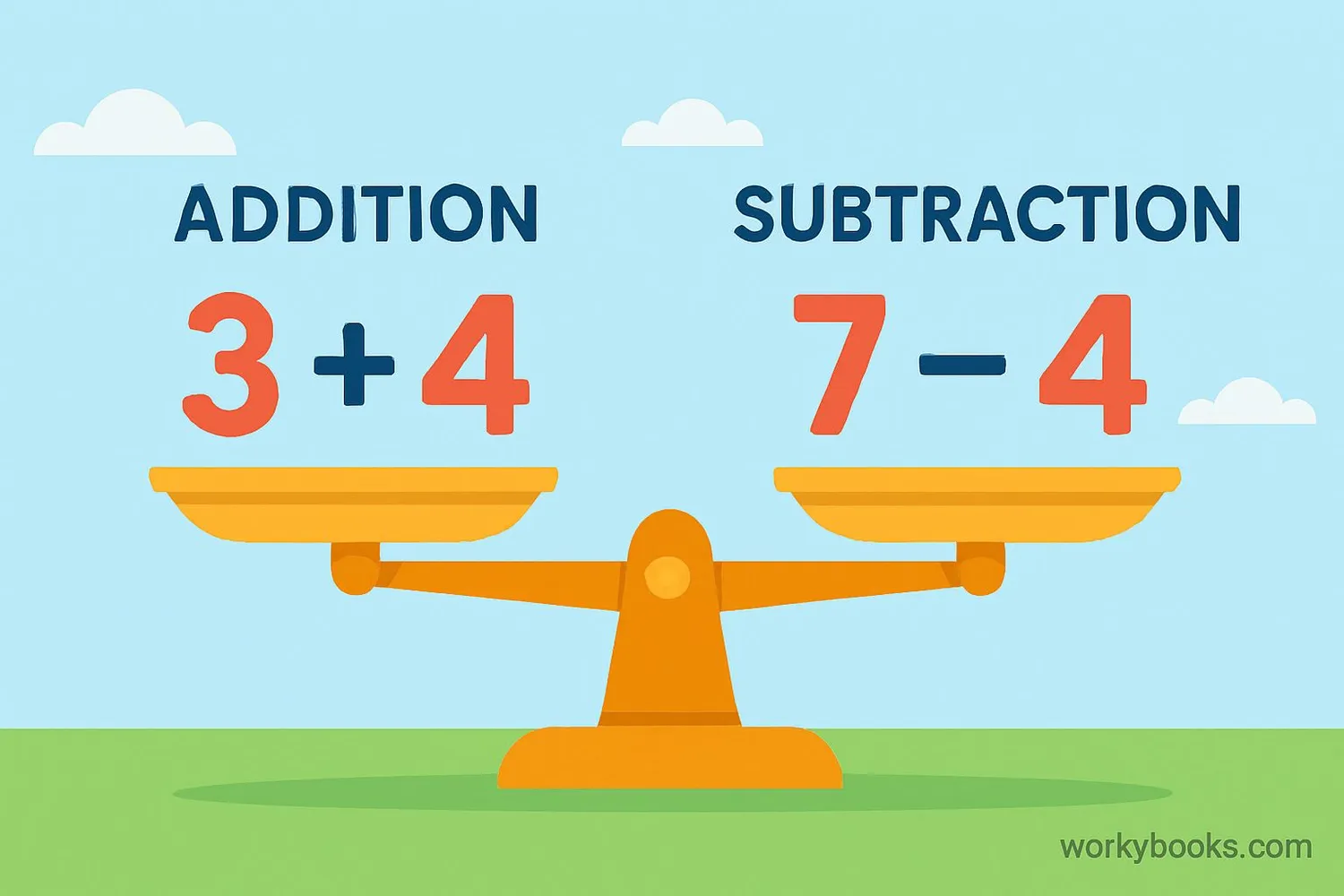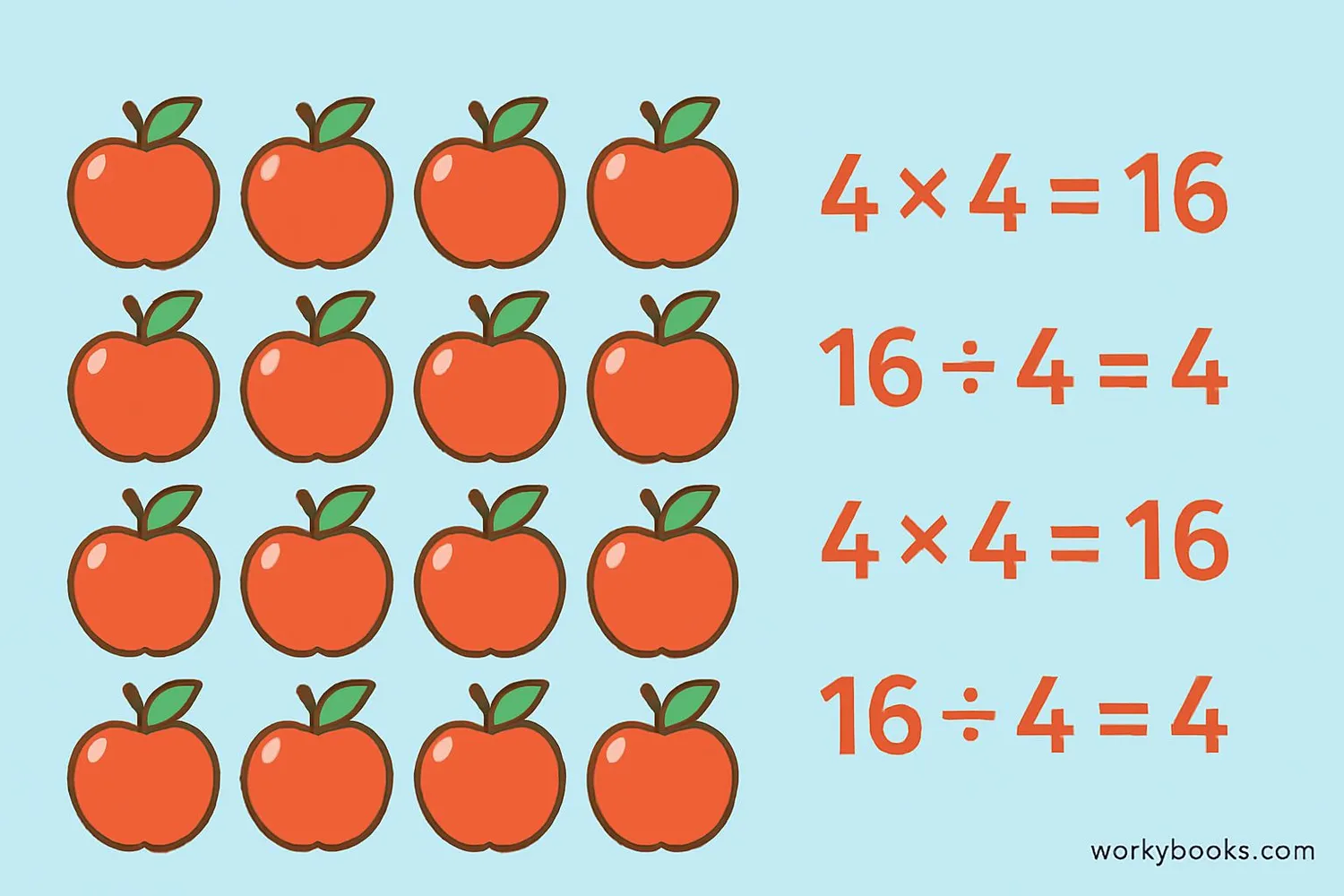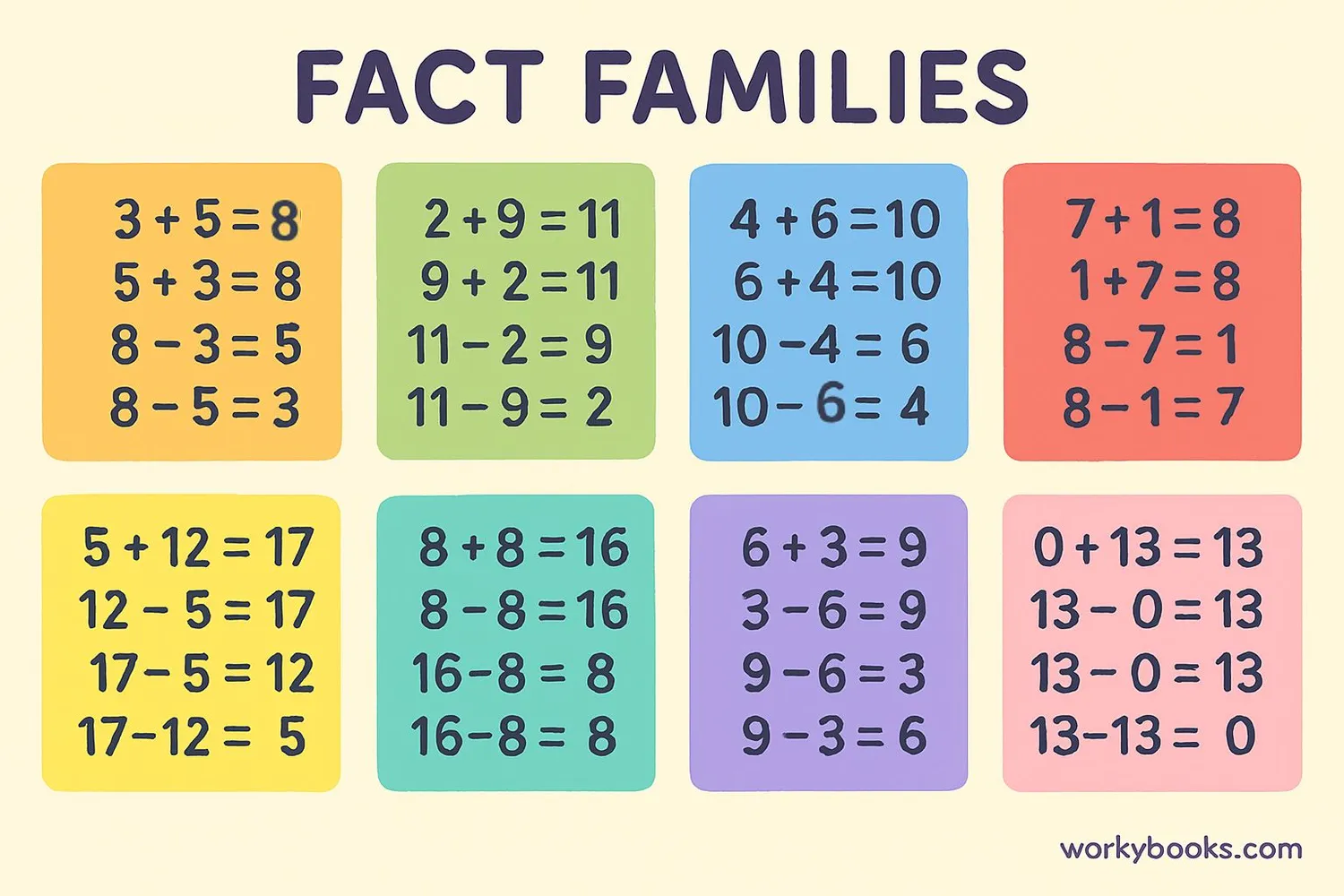Fact Families - Definition, Examples, Quiz, FAQ, Trivia
Discover how numbers relate to each other through addition, subtraction, multiplication and division
What is a Fact Family?

A fact family is a group of math facts that use the same set of numbers. Just like brothers and sisters in a family, these facts are related to each other!
For example, the numbers 2, 3, and 5 can form these addition and subtraction facts:
2 + 3 = 5
3 + 2 = 5
5 - 2 = 3
5 - 3 = 2
These four equations make up the fact family for 2, 3, and 5. Notice how they all use the same three numbers? That's what makes them a family!
Key Concept
A fact family contains related math facts that use the same three numbers. For addition and subtraction, it includes two addition facts and two subtraction facts.
Addition & Subtraction Fact Families

Addition and subtraction are like opposites - they undo each other. This makes them perfect partners in fact families!
Every addition fact family has:
- Two addition facts (adding the smaller numbers to get the larger number)
- Two subtraction facts (starting with the larger number and subtracting one of the smaller numbers)
Addition/Subtraction Fact Family
The numbers 4, 5, and 9 form this fact family
Remember
The largest number in an addition/subtraction fact family is always the sum in the addition facts and the starting point in the subtraction facts.
Multiplication & Division Fact Families

Just like addition and subtraction, multiplication and division are inverse operations that form fact families. Multiplication combines equal groups, while division separates them into equal groups.
Every multiplication fact family has:
- Two multiplication facts
- Two division facts
Multiplication/Division Fact Family
The numbers 3, 4, and 12 form this fact family
Remember
Division facts start with the largest number (the product) and divide it by one of the factors to get the other factor.
Fact Family Examples

Let's look at more examples of fact families:
Addition/Subtraction Examples
| Numbers | Fact Family Equations |
|---|---|
| 5, 6, 11 | 5+6=11, 6+5=11, 11-5=6, 11-6=5 |
| 7, 8, 15 | 7+8=15, 8+7=15, 15-7=8, 15-8=7 |
| 9, 3, 12 | 9+3=12, 3+9=12, 12-9=3, 12-3=9 |
Multiplication/Division Examples
| Numbers | Fact Family Equations |
|---|---|
| 2, 5, 10 | 2×5=10, 5×2=10, 10÷2=5, 10÷5=2 |
| 3, 6, 18 | 3×6=18, 6×3=18, 18÷3=6, 18÷6=3 |
| 4, 7, 28 | 4×7=28, 7×4=28, 28÷4=7, 28÷7=4 |
Practice Tip
Try creating your own fact families! Pick three numbers that work together and write all four facts.
Fact Family Practice Quiz
Test your understanding with this 5-question quiz. Choose the correct answer for each question.
Frequently Asked Questions
Here are answers to common questions about fact families:
Math Trivia
Discover interesting facts about math and numbers:
Ancient Number Systems
The concept of fact families has been around since ancient times! Babylonians used base-60 number systems and understood relationships between numbers as early as 1800 BC.
Math & Memory
Learning fact families helps build stronger neural connections in the brain. When students understand relationships between numbers, they can recall math facts more quickly and accurately.
The Largest Number
The largest number with a name is a "googolplex" - that's 1 followed by a googol of zeros! A googol is 1 followed by 100 zeros. Fact families help us understand even these enormous numbers!
Fastest Mental Calculation
The world record for mentally adding ten 10-digit numbers is 2 minutes 43 seconds! Understanding fact families helps build the mental math skills needed for such impressive calculations.





